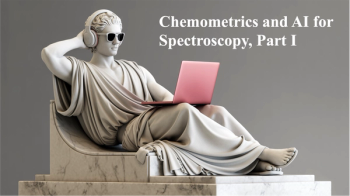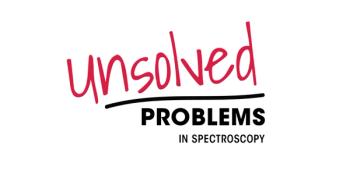
- Application Notebook-02-01-2017
- Issue 2
IsoMist XR: Improved Performance with Precise Temperature Control for any ICP Application
The temperature of a sample introduction system has a profound effect on ICP-OES and ICP-MS performance. Most ICP-MS instruments use a cooled spray chamber to reduce oxide and polyatomic interferences. A cooled spray chamber is also often used to reduce the volatility of solvents so that a stable plasma is sustained. Heating the spray chamber results in higher sample transport, enhancing sensitivity. Maintaining a constant and stable spray chamber temperature improves analytical stability and enhances throughput by reducing QC failures.
Glass Expansion developed the IsoMist™ to meet the demand for a reliable and convenient temperature controlled spray chamber. On the 10th anniversary of the IsoMist release, we are pleased to introduce the IsoMist XR™ (Figure 1). With an extended temperature range of -25 °C to +80 °C the IsoMist XR guarantees optimum conditions for any application. In this article, we detail the new design features of the IsoMist XR and highlight several applications that benefit from the use of a temperature controlled cyclonic spray chamber.
Introduction
The IsoMist, first introduced by Glass Expansion in 2007 (1), provided ICP laboratories with a convenient self-contained alternative to a jacketed spray chamber by eliminating the need for a bulky chiller, coolant, complex coolant tubing, and dangerous icing-up of the spray chamber. In contrast to the limited temperature range of a jacketed spray chamber, the IsoMist provides a programmable range of -10 °C to +60 °C in increments of 1 °C. This temperature flexibility addressed the challenges associated with several ICP applications (1–6).
The IsoMist XR incorporates an improved thermodynamic design, providing an extended temperature range and faster equilibration so that your target temperature is attained more quickly. The spray chamber temperature of the IsoMist XR is accurately controlled using a multi-stage Peltier device, with a range of -25 °C to +80 °C in increments of 1 °C. The proprietary software of the IsoMist XR is connected via a USB port or wireless Bluetooth® technology.
A cyclonic spray chamber encapsulated with a temperature conductive resin provides the IsoMist XR with a uniform spray chamber temperature from top to bottom and an air tight fit within the module (5,6). These features allow for a stable temperature to be maintained with an unmatched accuracy of ± 0.1 °C and prevent condensation build-up and freezing. The combination of the encapsulated spray chamber and dual-stage Peltier allows the IsoMist XR to reach -25 °C in less than 15 min (from ambient temperature).
The IsoMist XR is compatible with interchangeable glass, quartz, and PFA cyclonic spray chambers, offering the analyst with the utmost flexibility and optimum setup for any matrix. Glass Expansion's proprietary Helix™ o-ring free nebulizer interface eliminates sample contamination and ensures easy nebulizer removal. This zero dead volume nebulizer interface reduces carry-over, improves washout between samples (5) and a built-in positive stop ensures correct and reproducible nebulizer insertion depth for consistent nebulizer performance.
Results
Improved Stability
Fluctuations in laboratory temperature affect sample viscosity and nebulization efficiency; a change of 1 °C in spray chamber temperature can result in a sensitivity change of 3% (5). Maintaining a constant temperature with the IsoMist XR improves analytical reproducibility and accuracy, enhances throughput and lowers operating costs by reducing the need to re-run samples when a QC check drifts outside the acceptable range.
Reduced Oxide Interferences
Using the IsoMist XR spray chamber at sub-ambient temperatures on an ICP-MS reduces the water vapor transferred to the plasma, resulting in lower oxide formation and reduced polyatomic (ArO, ArOH) interferences. Less oxides in the plasma translates to fewer interferences, improving accuracy and detection limits (1).
Improved Detection Limits
An investigation was recently carried out using the IsoMist connected to a Spectro Arcos II MV ICP-OES at a NY water treatment facility. Replacing the standard cyclonic spray chamber with the IsoMist and optimizing the sample introduction environment at 5 °C provided a significant improvement in instrument detection limits (Table I).
Volatile Solvents
Volatile organic solvents are a challenge due to high transport efficiency to the plasma, creating an excessive load resulting in plasma instability or, in the worst case, cessation. One of the most difficult and commonly analyzed solvents is light naphtha. Due to its high volatility, naphtha is usually diluted with a less volatile solvent, like kerosene. However, a dilution restricts lower detection limits from being achieved. The IsoMist XR allows for direct analysis of naphtha without dilution at a temperature of -25 °C (6), resulting in higher intensities, better precision, and higher accuracy compared to previous work (1,2) at -10 °C (Figure 2). The extended temperature range of -25 °C makes the IsoMist XR the perfect tool for analyzing volatile solvents like naphtha and gasoline without dilution.
Enhanced Sensitivity and Accuracy
The sensitivity for many analyses can be enhanced by operating the spray chamber at elevated temperatures. For example, the IsoMist showed improved accuracy and signal intensity for Pt and other precious metals at a temperature range of 30 °C to 45 °C (5). Heating the spray chamber also improves the analysis of viscous samples such as lubricants and edible oils, in addition to limited sample volumes (2).
Summary
The IsoMist XR is an elegant, compact, stand-alone system resistant to attack from acids and solvents commonly used in ICP analysis. The IsoMist XR enhances the sample introduction environment to provide the conditions necessary for accurate and reproducible measurements for any ICP application. The compact design and customized interface kit allow the IsoMist XR to be compatible with virtually any ICP-OES or ICP-MS.
References
(1) "Enhanced Performance for ICP-MS and ICP-OES," Glass Expansion February 2007 newsletter.
(2) "Applications of a Temperature Controlled Spray Chamber," Glass Expansion June 2007 newsletter.
(3) "Spray Chamber Temperature: A Critical Parameter in ICP Experiments," Glass Expansion February 2008 newsletter.
(4) "Improved Accuracy in the Analysis of Precious Metals," Glass Expansion October 2010 newsletter.
(5) "ICP Spray Chamber Update," Glass Expansion October 2014 newsletter.
(6) "Optimizing the Analysis of Naphtha by ICP-OES," Glass Expansion June 2015 newsletter.
Glass Expansion Inc.
4 Barlows Landing Rd, Unit 2A, Pocasset, MA 02559
tel. (508) 563-1800, fax (508) 563-1802
Website:
Articles in this issue
almost 9 years ago
Aerial Hyperspectral Imaging by BaySpec OCI Hyperspectral Imagersalmost 9 years ago
A Diamond ATR Study of Thin 225 nm Films on Glassalmost 9 years ago
In-Process Raman Spectroscopy of Layered Materialsalmost 9 years ago
Pesticide Detection Using SERS Techniquesalmost 9 years ago
Confocal Raman Imaging in Pharmaceutical Researchalmost 9 years ago
ATR–FT-IR Investigation of the Ocean SurfaceNewsletter
Get essential updates on the latest spectroscopy technologies, regulatory standards, and best practices—subscribe today to Spectroscopy.




